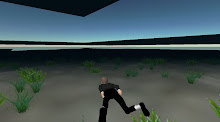“…this involves, then not just thinking that we should pass along discrete sets of skills to others—or pretending that those discrete sets of skills are all that it takes to have a different life. There are certainly skills needed for connecting and reconnecting information—but the relationships to communication technologies we are describing now and here ask, in necessary addition, for a shared and discussed, ongoing, reconception of the space and time we use together and in which we find (and can construct) information and ourselves.
This reconception is thus not about handing down skills to others who are not where we are, but about figuring out how we all are where we are, and about how we all participate in making these spaces and the various selves we find here.” (italics added; Selfe, Passions Pedagogies and 21st Century Technologies 366)
Wysocki and Johnson-Eilola counter the banking method of teaching with a social constructivistic proposal for revitalizing the ways we know and teach, privileging communication over the traditional idea of literacy as mastery of skills. Literacy, as an over-arching term that encompasses many different subsets—reading, writing, math, technology, etc.—has traditionally been preferred, possibly because educators who are mandated to assess student learning can more easily measure definable tasks and configurations of those tasks. Moreover, the “‘literacy myth’” (attributed to separate writings by Harvey J. Graff and Ruth Finnegan) is a “belief that literacy will bring us” suffrage, a place in dominant culture, or acceptance in traditionally privileged communities like academia (353). Communication, in the form of articulation, requires rethinking assessment to uncover learning not easily isolated. (This is where Guba and Lincoln’s fourth generation evaluation, particularly the recursivity of hermeneutic dialectics, could be applied.)
In a way, resistance to Wysocki and Johnson-Eilola’s alternative of articulation, as opposed to literacy, could be compared to the resistance to forward-moving writing technologies discussed by Dennis Baron in From Pencils to Pixels. Why change longstanding practices? Why integrate new ways of doing/thinking when the old ways still work (or sorta work)? For example, Douglas Hesse argues that we should retain longstanding essayistic literacy at the same time as new writing technologies make possible listserv “essays,” hypertexts, and other forms of computer-generated writing and communication. He asks whether a discussion thread could be presented as an essay: “Would the result be recognizable as an essay? Even suspending the interesting issues of style and voice, the main quality that threads-as-essays lack is shape and closure” (44). However, Montaigne does not necessarily give shape to his essays nor provide closure to the reader in his chrono-logic (Paul Heilker) approach.
Questions:- The most interesting discussion presented in Wysocki and Johnson-Eilola’s article, for me personally, is the idea that “time and space collapsing into each other” (363). What purposes are served through this? How are physically distant place brought close and virtual spaces collapsed (leading “to the idea that real spaces are likewise”)? (364)
- Do we want to promote the space-time compression mentioned in this article? What can we envision happening in the future as this becomes universal?
- A question for me to follow up on: How would Yi-Fu Tuan, Edward Soja, and Michel Foucault perceive this postmodern view of collapsed space-time?

![Sig[h]ns](http://bp1.blogger.com/_RkYu0NE8-5U/R6frnRz_BfI/AAAAAAAAABw/ymFHpLR09Ro/S220/U.K.,+Beauty+Lou,+Chelsea,+Coeur+d+Alene+463.jpg)
No comments:
Post a Comment